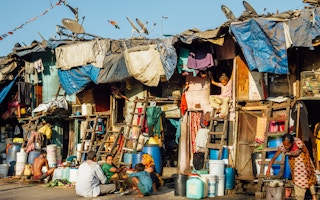The Indian state of Kerala is offering free flats to homeless people, an ambitious model that activists say other states must follow as a nationwide “Housing for All” plan falls short.
The first 145 families moved into their newly constructed flats in a 270-unit complex in Adimali town in southern India this month, a state official said.
The state has surveyed its homeless population, and will build more than 400,000 homes for those who qualify, said U.V. Jose, chief executive of the LIFE Mission, a government agency overseeing the project.
“Those without a home are the poorest, most vulnerable. Many cannot afford to buy a home, no matter how cheap it is,” Jose told the Thomson Reuters Foundation on Thursday.
“A home is a basic necessity. With a home, they can feel more secure and confident, and they can focus on other matters, which can improve the quality of their life,” he said.
Each unit will cost about 400,000 rupees ($5,700) to build, and will be wholly funded by the government, Jose said.
This is in contrast to the federal housing scheme, which offers subsidised loans for home purchases.
“
The government’s ‘housing for all’ scheme has no provisions for the homeless, and all interventions by the centre and the state governments have been limited to providing temporary shelters.
Shivani Chaudhry, executive director, Housing and Land Rights Network
Nation on the move
With rapid urbanisation, a shortage of affordable homes has spurred the growth of slums and informal settlements in cities across India. There are 1.77 million homeless people nationwide, according to the 2011 census data, although rights groups say the actual figure is at least three times higher.
The government plan, Housing for All, is meant to create 20 million new urban housing units and 30 million rural homes by 2022. But the rollout has been slow, and campaigners say it will not fix the issue of homelessness and informal settlements.
Some states are improving slum conditions, and assuring residents they will not be evicted for some years.
In eastern Odisha state, authorities have promised land titles to 200,000 households in urban slums and those on city outskirts, as well as loans to build homes.
But for others, evictions are a daily threat.
At least 11 million people in India risk being uprooted from their homes and land as authorities build highways and airports and cordon off forests, according to advocacy group Housing and Land Rights Network (HLRN).
Kerala’s model is the only viable solution to end homelessness, said Shivani Chaudhry, executive director of HLRN.
“The government’s ‘housing for all’ scheme has no provisions for the homeless, and all interventions by the centre and the state governments have been limited to providing temporary shelters,” she said.
“This initiative by the Kerala government attempts to shift the focus from ‘shelters’ to ‘housing’. This is welcome and much needed, as it is the only way that the issue of homelessness can be addressed,” she said.
This story was published with permission from Thomson Reuters Foundation, the charitable arm of Thomson Reuters, that covers humanitarian news, climate change, resilience, women’s rights, trafficking and property rights. Visit http://news.trust.org/climate.










